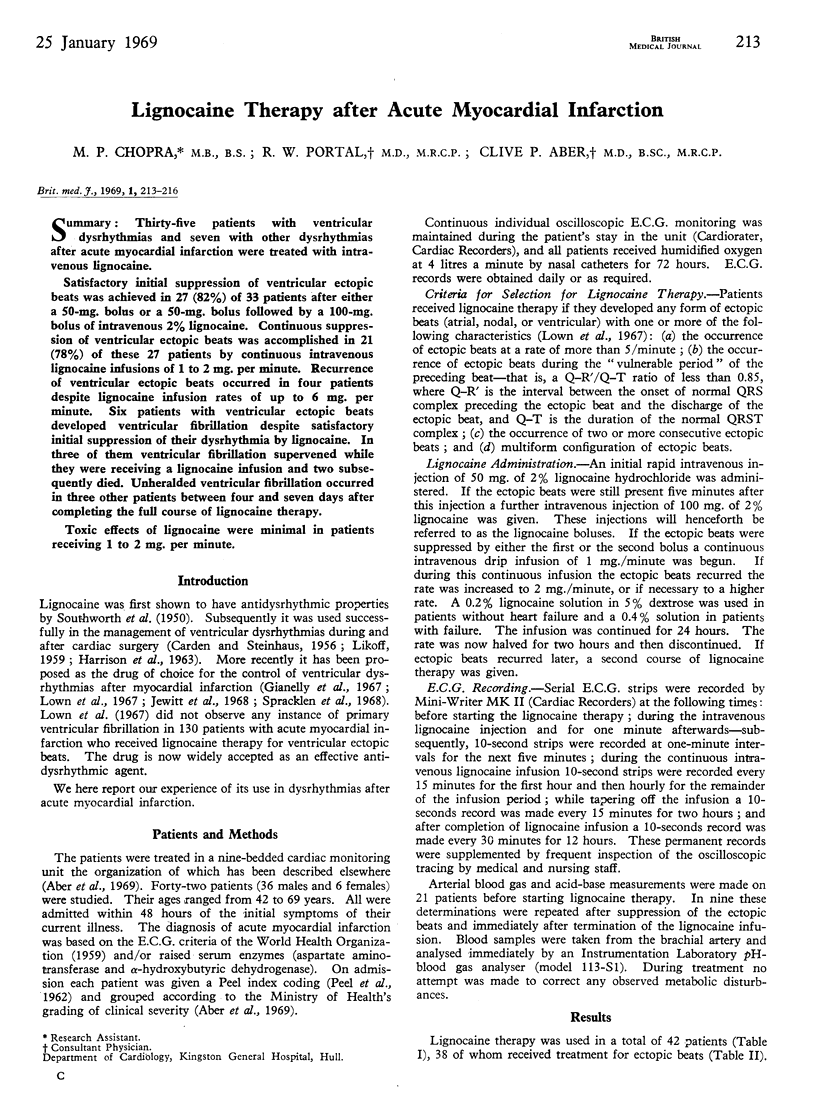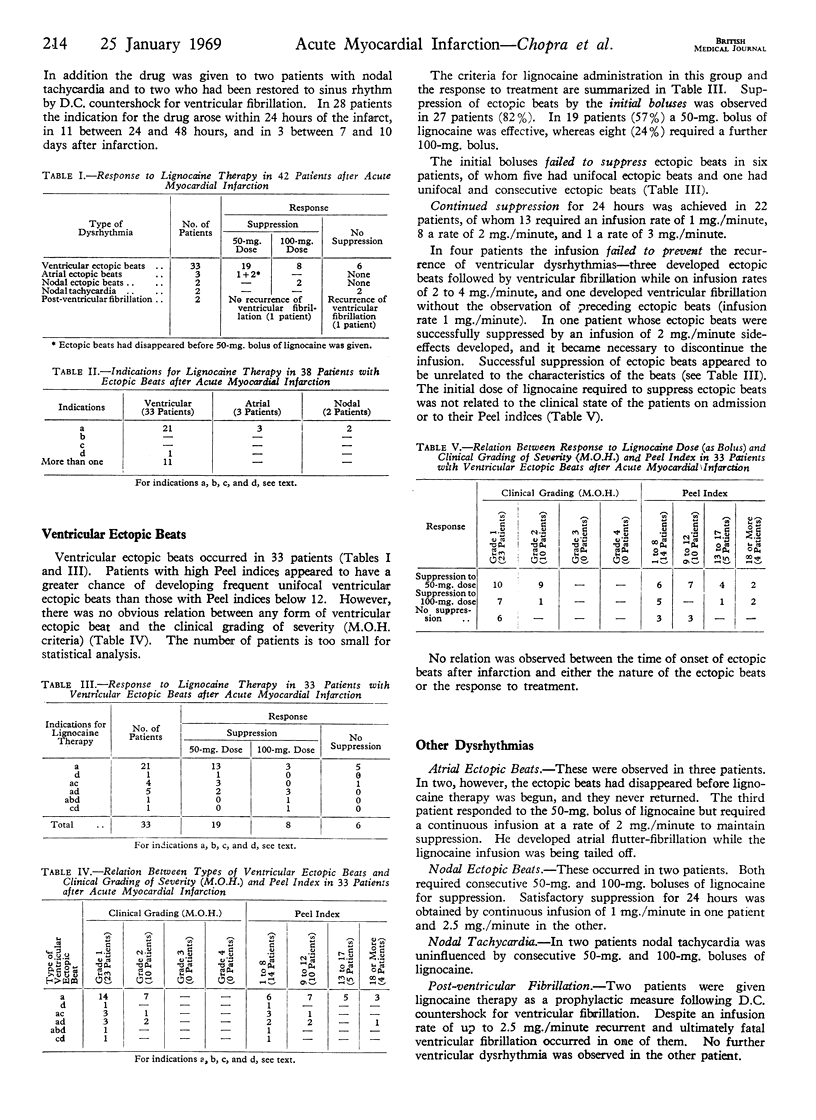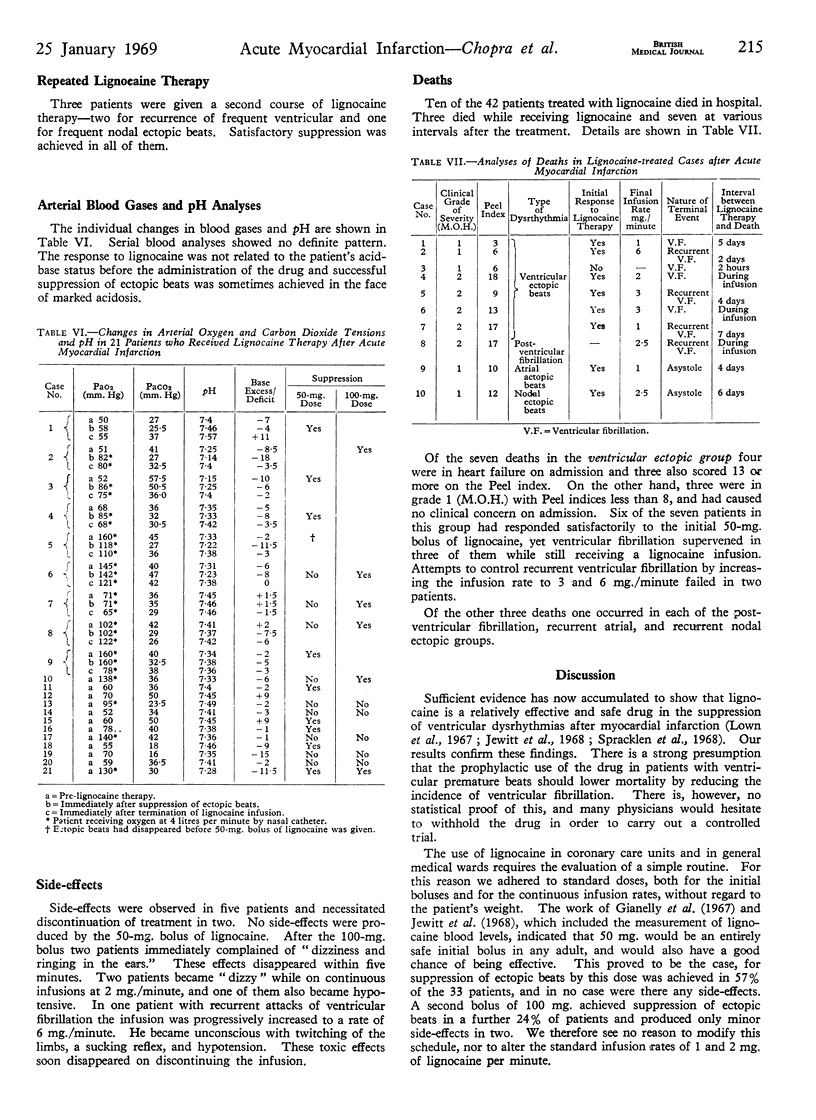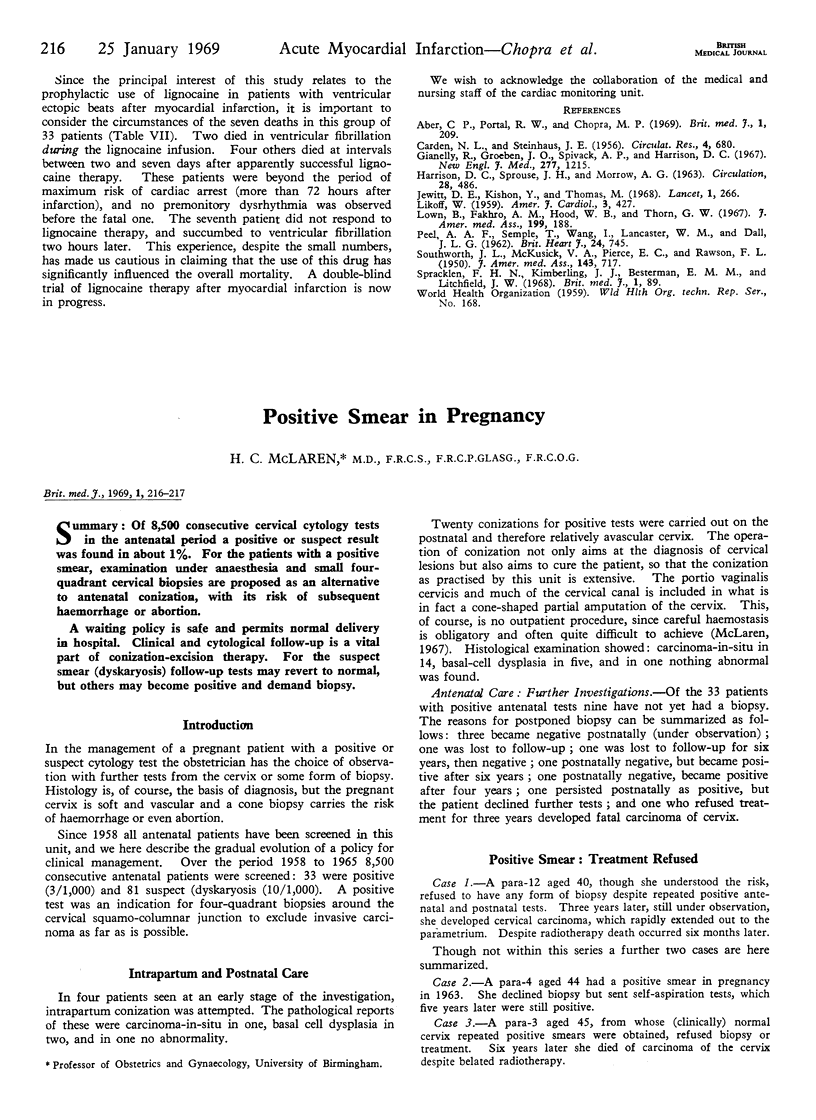Abstract
Thirty-five patients with ventricular dysrhythmias and seven with other dysrhythmias after acute myocardial infarction were treated with intravenous lignocaine.
Satisfactory initial suppression of ventricular ectopic beats was achieved in 27 (82%) of 33 patients after either a 50-mg. bolus or a 50-mg. bolus followed by a 100-mg. bolus of intravenous 2% lignocaine. Continuous suppression of ventricular ectopic beats was accomplished in 21 (78%) of these 27 patients by continuous intravenous lignocaine infusions of 1 to 2 mg. per minute. Recurrence of ventricular ectopic beats occurred in four patients despite lignocaine infusion rates of up to 6 mg. per minute. Six patients with ventricular ectopic beats developed ventricular fibrillation despite satisfactory initial suppression of their dysrhythmia by lignocaine. In three of them ventricular fibrillation supervened while they were receiving a lignocaine infusion and two subsequently died. Unheralded ventricular fibrillation occurred in three other patients between four and seven days after completing the full course of lignocaine therapy.
Toxic effects of lignocaine were minimal in patients receiving 1 to 2 mg. per minute.
Full text
PDF



Selected References
These references are in PubMed. This may not be the complete list of references from this article.
- Aber C. P., Portal R. W., Chopra M. P. Cardiac monitoring in a regional hospital. Br Med J. 1969 Jan 25;1(5638):209–212. doi: 10.1136/bmj.1.5638.209. [DOI] [PMC free article] [PubMed] [Google Scholar]
- CARDEN N. L., STEINHAUS J. E. Lidocaine in cardiac resuscitation from ventricular fibrillation. Circ Res. 1956 Nov;4(6):680–683. doi: 10.1161/01.res.4.6.680. [DOI] [PubMed] [Google Scholar]
- Gianelly R., von der Groeben J. O., Spivack A. P., Harrison D. C. Effect of lidocaine on ventricular arrhythmias in patients with coronary heart disease. N Engl J Med. 1967 Dec 7;277(23):1215–1219. doi: 10.1056/NEJM196712072772301. [DOI] [PubMed] [Google Scholar]
- HARRISON D. C., SPROUSE J. H., MORROW A. G. THE ANTIARRHYTHMIC PROPERTIES OF LIDOCAINE AND PROCAINE AMIDE. CLINICAL AND PHYSIOLOGIC STUDIES OF THEIR CARDIOVASCULAR EFFECTS IN MAN. Circulation. 1963 Oct;28:486–491. doi: 10.1161/01.cir.28.4.486. [DOI] [PubMed] [Google Scholar]
- LIKOFF W. Cardiac arrhythmias complicating surgery. Am J Cardiol. 1959 Apr;3(4):427–429. doi: 10.1016/0002-9149(59)90362-5. [DOI] [PubMed] [Google Scholar]
- Lown B., Fakhro A. M., Hood W. B., Jr, Thorn G. W. The coronary care unit. New perspectives and directions. JAMA. 1967 Jan 16;199(3):188–198. [PubMed] [Google Scholar]
- Peel A. A., Semple T., Wang I., Lancaster W. M., Dall J. L. A CORONARY PROGNOSTIC INDEX FOR GRADING THE SEVERITY OF INFARCTION. Br Heart J. 1962 Nov;24(6):745–760. doi: 10.1136/hrt.24.6.745. [DOI] [PMC free article] [PubMed] [Google Scholar]
- SOUTHWORTH J. L., McKUSICK V. A., PIERCE E. C., 2nd, RAWSON F. L., Jr Ventricular fibrillation precipitated by cardiac catheterization; complete recovery of the patient after 45 minutes. J Am Med Assoc. 1950 Jun 24;143(8):717–720. doi: 10.1001/jama.1950.02910430009003. [DOI] [PubMed] [Google Scholar]
- Spracklen F. H., Kimerling J. J., Besterman E. M., Litchfield J. W. Use of lignocaine in treatment of cardiac arrhythmias. Br Med J. 1968 Jan 13;1(5584):89–91. doi: 10.1136/bmj.1.5584.89. [DOI] [PMC free article] [PubMed] [Google Scholar]


